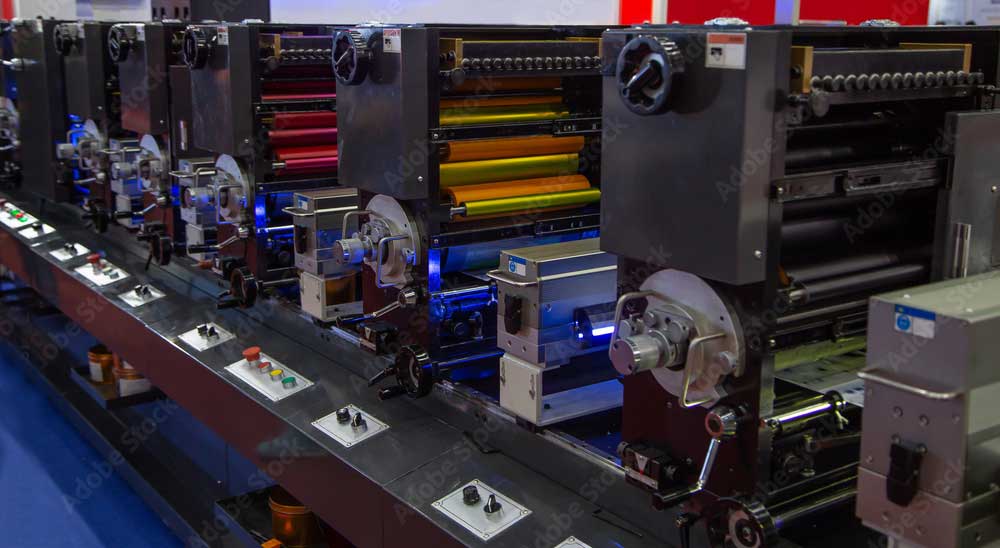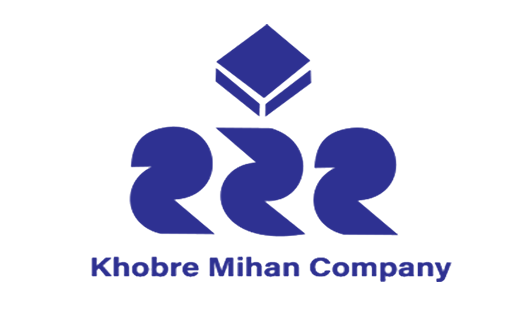The importance of printing in product packaging
- Khobre Mihan co
- Article
- The importance of printing on packaging
Table of Content
Packaging a product with an attractive print plays a crucial role in attracting customers’ attention. When a person enters a store and is faced with a multitude of products, one of the most important factors in their selection among the array of products is undoubtedly the product’s packaging. The use of appropriate information and images in cardboard printing and creating an appealing and unique design are among the key factors for the successful design of a product.
Recognizing the significance of printing in packaging, many companies have established dedicated units and employed experienced professionals to enhance their products and boost sales. This strategic approach involves utilizing the expertise of specialists in the field to create visually appealing and distinctive packaging designs. This is crucial because, in today’s market, one of the most important factors for a product to be noticed and differentiated from others is the design and printing of its packaging.

Flexographic printing
Flexographic printing is a common method in the printing industry, particularly for cardboard packaging. In this printing process, the design is directly applied to a cylinder using a device called a flexographic printing press. Flexible gelatin-based plates, adhered to a plate cylinder, come into direct contact with the cardboard, transferring the design. This method is widely used in printing logos, specifications, letters, abbreviations, and simple graphic images on cardboard packaging.
Some advantages of flexographic printing include:
1- High Printing Speed: Flexography is one of the fastest printing methods, enabling the rapid production of packaging materials.
2- Multi-layer Printing Capability: Flexographic printing has the ability to print on the surface of the substrate in multiple layers, providing designers with more versatility in their designs.
3- Cost-Effectiveness: Due to its high speed, the cost of printing with this method is significantly reduced compared to some other printing methods.
4- High Durability: Designs and prints produced with flexographic printing exhibit high durability. This means that the designs are well-protected against the effects of time and various environmental factors.
5- Reasonable Tooling Costs: The cost of creating printing tools (plates) in flexographic printing is reasonable compared to other methods, contributing to cost-effective production.
Offset Printing
Offset printing is primarily used for printing on labels, tags, glossy cardboard, coated cardboard, and other packaging papers. In this process, the text and images are first transferred onto the cardboard or paper. Cartons produced using this method are often referred to as laminated cartons. If the importance of printing in product packaging and the quality of an image on cardboard are priorities for you, offset printing is the best option.
Some common features of offset printing include:
CMYK Color System: In the lithography unit, the CMYK color system is utilized. The resulting file is a combination of four colors:
Cyan: Turquoise
Magenta: Magenta
Yellow: Yellow
Black: Black
Offset printing is a printing technique that uses a combination of four colors in four stages and is based on a water and ink mixture. This printing method is commonly used for printing catalogs, brochures, flyers, labels, business cards, letterheads, and promotional cards, especially for laminated cartons, which is known as laminated printing.
The lamination Process
Printing on cardboard is typically done using automatic machines that have no limitations in terms of print quality or number of colors.
in Brief The Offset Printing Process
The offset printing process involves the following steps:
Designing the Print: Creation of the print design by a designer.
Template Preparation: Preparation and creation of the printing template, including any necessary die cuts or blade lines.
Ordering Zinc Plates: Placing an order for zinc plates, which are used in the lithography unit.
Offset Printing: Printing the poster using the offset printing press, typically in four stages for each color (CMYK).
Application of Coating: Applying a coating such as cellophane, UV coating, or varnish if needed for additional protection or aesthetic effects.
Lamination: Laminating (adhering) the printed poster onto cardboard for added durability and protection.
Die-Cutting: Cutting the cardboard with the printed poster using a die-cutting process to achieve the desired shape.
Edge Gluing: Gluing the edges of the cardboard, often through a gluing or stitching process.
Packaging: Packaging the cardboard, either strapped or palletized, for shipping to customers.
These steps ensure the creation of a printed poster with enhanced durability and a professional finish, suitable for various applications.
Advantages of Offset Printing
1- High Print Quality and Image Clarity: Offset printing provides exceptional print quality with sharp image clarity, making it suitable for producing detailed and visually appealing prints.
2- Versatility in Printing: Offset printing offers high printability, allowing it to be used on various types of paper. Its versatility extends to different paper surfaces and finishes.
3- High-Speed and High-Volume Printing: Offset printing is known for its ability to achieve high printing speeds and handle large print volumes efficiently. This makes it a cost-effective choice for large-scale printing projects.
4- Custom Inks and Special Colors: Offset printing supports custom inks and special colors, such as metallic and Pantone colors. It accurately reproduces colors according to specific color codes, providing flexibility in design.
5- Long-lasting Print and Enhanced Packaging Durability: Prints produced through offset printing exhibit high durability, contributing to increased resistance in packaging materials. This is crucial for maintaining the integrity of the packaging over time.
6- Wide Range of Paper Options: Offset printing can utilize a broad spectrum of paper types with various coatings and finishes. This flexibility allows for the selection of the right paper for specific applications, catering to diverse printing needs.
These advantages highlight the effectiveness of offset printing in delivering high-quality, versatile, and durable prints for various purposes, ranging from marketing materials to packaging.
Disadvantages of Offset Printing
Economical Only for Large Print Runs: Offset printing becomes cost-effective at minimum quantities of around 5000 copies, making it less economical for smaller print runs.
Higher Printing Costs Compared to Flexography: The overall cost of offset printing is higher compared to flexography, especially for shorter print jobs.
Extended Preparation Time: The preparation process for offset printing, including the creation of zinc plates and other setup procedures for boxes and cartons, takes more time compared to flexographic printing.
Quality Depends on Zinc Plate Quality: If low-quality zinc plates are used, the print quality in offset printing may suffer. The quality of the zinc plates directly affects the final output.
Limited Adjustability During Printing: Once the printing press is set up and the job begins, there is limited flexibility to make adjustments. Unlike some other printing methods, offset printing does not easily allow changes in settings once the printing process has started.
These disadvantages highlight considerations such as print run size, cost-effectiveness, setup time, and flexibility when choosing offset printing as a printing method. While offset printing offers high-quality results for large quantities, it may not be the most economical choice for smaller or more flexible printing projects.
Carton Printing with Silk Screen
Silk screen printing is one of the simplest packaging printing methods, performed directly on cartons in single or multiple distinct colors. In this method, color is applied through a stencil, creating pressure on the stencil, transferring the color from the stencil’s pores onto the cardboard.
Advantages of Silk Screen Printing
- High-Quality Print and No Tolerance in the Design (Print Fidelity): Silk screen printing provides high-quality prints with no deviation in the design, ensuring print fidelity.
- Cost-Effective for Printing in Lower Quantities (Less than 1000 units): This method is cost-effective, especially for prints with quantities less than 1000 units.
- Possibility to Print on Various Sheet Sizes, from Large to Small: Silk screen printing allows for printing on a variety of sheet sizes, accommodating both large and small dimensions.
Disadvantages of Silk Screen Printing
- Low Printing Speed, Not Cost-Effective for High-Volume Production: The speed of silk screen printing is low, making it inefficient for high-volume packaging production.
- Limited Use of Diverse Colors: The use of various colors in this type of printing is limited compared to other methods.
- Manual Process and Higher Production Costs Compared to Flexographic Printing: The process involves manual steps, and production costs are higher compared to flexographic printing.
The importance of printing in packaging has captured the attention of business owners more than ever. Just as creative and attractive carton design and printing attract customers and differentiate a product from others, a weak design and poor-quality packaging can lead to loss of customers and a decline in the company’s reputation from the customer’s perspective. Offset and digital printing are among the most commonly used types of printing, each with significant differences. These differences lead individuals to choose one over the other based on the type of product, its application, carton design, and its effectiveness in the customer’s mind.
We assist our customers in standing out in the market by providing superior packaging solutions.
To achieve this goal, we continuously invest in developing our relationships with our customers so that we can meet their current and future needs. Our team of experienced consultants and engineers at Khobre Mihan Company thoroughly assesses various packaging options after listening to the customers’ requirements. Then, utilizing valuable past experiences and up-to-date packaging knowledge and innovative technologies, we present the most optimized packaging solution to consumers. For more information and consultation, click on the Free Consultation button.

